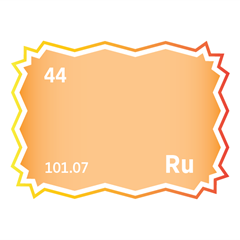United States
Critical minerals, policy, and the energy transition
The Energy Transition in the United States
The United States is navigating a pivotal phase in its energy transition, moving away from fossil fuels towards renewable sources such as wind, solar, and hydroelectric power. This shift is driven by the need to address climate change and build a sustainable economy. At the heart of this transformation are critical minerals—lithium, cobalt, nickel, and rare earth elements—essential for batteries, electric vehicles, and renewable technologies. However, under President Trump’s administration, there has been a significant policy shift prioritising energy independence and economic growth. The Inflation Reduction Act's initial momentum has been recalibrated to focus more on domestic production and reducing reliance on foreign mineral imports.
Latest news and insights
Stay ahead in the energy transition with SFA (Oxford)’s cutting-edge insights into how critical minerals, geopolitics, ESG, and supply chain risks are reshaping global growth and redefining US strategic priorities.

China Imposes Export Controls on Rare Earths
5 April 2025 | Jamie Underwood
China imposes sweeping export controls on critical medium and heavy rare earths, escalating strategic competition over high-tech and defence supply chains.

Declaring a US Trade Emergency
3 April 2025 | Jamie Underwood
The US declared a trade emergency, imposing sweeping tariffs, rare exemptions, and bold legal moves. What triggered it, and what will happen next?
Annex-I: Adjusted US Reciprocal Tariffs Country List
2 April 2025 | White House
Annex-II: US Tariff Exemptions [Critical Commodities and Industrial Inputs]
2 April 2025 | White House
United States' international economic, trade, and security alliances
Geopolitics and the US energy transition
The US energy transition involves a significant shift from traditional fossil fuels like coal, oil, and natural gas to cleaner, renewable energy sources such as solar, wind, hydro, and geothermal power. This transition is driven by the need to reduce greenhouse gas emissions, combat climate change, and enhance energy security. However, geopolitics plays a crucial role in shaping the trajectory of this transition, particularly concerning the supply chains of critical minerals essential for clean energy technologies.
Critical minerals like lithium, cobalt, and rare earth elements are indispensable for manufacturing solar panels, wind turbines, batteries, and electric vehicles (EVs). These minerals are predominantly sourced from a limited number of countries, making the US supply chain vulnerable to geopolitical tensions and trade disruptions. For instance, a significant portion of the world's lithium comes from countries like Australia, Chile, and China, while cobalt is mainly mined in the Democratic Republic of Congo. Rare earth elements, crucial for various high-tech applications, are heavily produced in China. The concentration of these resources in specific regions means that any political instability, trade restrictions, or diplomatic conflicts can severely impact the availability and cost of these critical minerals.
To mitigate these geopolitical risks, the US is focusing on several strategies. Increasing domestic production of critical minerals is a priority, involving both the exploration of new mining sites and the enhancement of extraction technologies. Additionally, the US is securing stable international partnerships to diversify its supply sources and reduce dependency on any single country. Developing robust recycling programs to reclaim minerals from used products and investing in research to find alternative materials that can replace critical minerals in specific applications are also vital measures.


Source: SFA (Oxford)
Amid these geopolitical considerations, the US energy transition continues progressing with a robust expansion of renewable energy sources. Solar power is increasing in deploying photovoltaic (PV) panels and the concentration of solar power (CSP) systems. Wind energy is expanding, with new onshore and offshore wind farms being developed to harness wind power. Hydropower efforts focus on modernising existing facilities and developing new ones, while geothermal resources are being tapped for electricity generation and heating applications.
Energy storage is critical, ensuring the reliability of intermittent renewable energy sources like solar and wind. Lithium-ion batteries, currently the most widely used storage technology, are essential for grid storage and EVs. Additionally, advanced storage technologies such as solid-state batteries and flow batteries are under active research and development to further enhance storage capabilities. The adoption of EVs is accelerating, with increasing numbers of electric cars, buses, and trucks reducing emissions in the transportation sector. The charging station network is being expanded to support this growth, including implementing smart charging solutions to optimise energy use and maintain grid stability.
Grid modernisation is essential for efficiently integrating renewable energy sources. Smart grids, which use digital technology to monitor and manage electricity flows, are being implemented to enhance the electricity supply's efficiency, reliability, and security. Microgrids, smaller independent grids that can operate autonomously, are also being developed to provide resilience and maintain power during broader grid outages. Alongside these advancements, energy efficiency measures are being strengthened. Stricter building standards and enhanced industrial efficiency practices are being implemented to reduce overall energy consumption and improve sustainability across various sectors.

Source: SFA (Oxford)
Policy shifts and national security
In January 2025, President Trump declared a National Energy Emergency, citing the nation's insufficient capacity to meet energy and critical mineral demands. The declaration underscored the strategic importance of developing domestic energy resources to safeguard sectors like manufacturing, transportation, agriculture, and defence. It emphasised reducing vulnerabilities to foreign actors and enhancing national security.
This policy adopts a more confrontational approach, framing mineral shortages as an existential threat to national security. By declaring an emergency, President Trump has unlocked executive powers to bypass congressional gridlock and expedite projects stalled by environmental reviews or litigation. Central to the emergency declaration is the directive for federal agencies to eliminate “undue burdens” on domestic energy and mineral projects. The Department of the Interior (DOI) and Department of Agriculture (USDA) are reassessing public land withdrawals, particularly in Alaska, which holds significant deposits of cobalt, rare earths, and uranium. The Council on Environmental Quality (CEQ) has rescinded stringent National Environmental Policy Act (NEPA) regulations, reverting to Trump-era rules that limit environmental reviews to one year for most projects
Executive Orders on critical minerals
The administration has issued executive orders designed to accelerate domestic mining and processing of critical minerals. These orders streamline permitting processes and encourage investment in extraction and refining infrastructure within the United States. The goal is to mitigate reliance on imports, particularly from geopolitical rivals, and to enhance supply chain resilience.
U.S. critical mineral policy has evolved through successive administrations, reflecting bipartisan recognition of the issue’s national security implications. President Trump’s Executive Order 13817 (2017) marked a turning point by mandating the identification of 35 minerals deemed vital to economic and defence priorities. This framework was expanded under the Biden administration via the Infrastructure Investment and Jobs Act (2021) and Inflation Reduction Act (2022), which allocated billions toward domestic mining and recycling projects. However, persistent vulnerabilities—such as China’s control over 70–80% of rare earth processing—remained unresolved.
The Trump administration’s 2025 executive orders, including “Unleashing American Energy” (EO 14154) and the “National Energy Emergency” declaration (EO 14156), seek to address these gaps by combining deregulation with strategic investments. These policies explicitly link mineral security to broader energy independence goals, framing reliance on foreign suppliers as an existential threat.
Central to the orders is a directive for federal agencies to identify and eliminate “undue burdens” on domestic mining and processing. The Department of the Interior (DOI) and Department of Agriculture (USDA) are tasked with reassessing public land withdrawals and updating the U.S. Geological Survey’s (USGS) critical minerals list, potentially adding uranium. Agencies must also expedite geological mapping to uncover untapped mineral reserves, prioritising regions like Alaska, which holds significant deposits of rare earth elements and cobalt.
The orders mandate sweeping reforms to accelerate project approvals:
-
Streamlined Reviews: The Council on Environmental Quality (CEQ) must rescind stringent National Environmental Policy Act (NEPA) regulations within 30 days, reverting to Trump-era rules that limit environmental reviews.
-
Judicial Efficiency: Restrictions on litigation timelines aim to prevent delays, addressing the 29-year average permitting timeline for U.S. mines—the second-longest globally after Zambia.
-
Emergency Authorities: Agencies are instructed to use emergency provisions under the National Emergencies Act to fast-track permits for projects deemed critical to national security.
Agencies are also leveraging emergency authorities under the Defense Production Act to fast-track permits for projects deemed critical to national security. The Department of Energy (DOE) is directed to prioritise critical mineral projects for federal loans and grants, while the Defense Department must expand the National Defense Stockpile (NDS) to cover more minerals. Proposals include forward purchase agreements with pre-permitted projects like NioCorp’s Elk Creek mine in Nebraska, which aims to produce niobium, scandium, and rare earths, metals essential for aerospace and defence applications. These reforms target the United States' notoriously slow permitting timeline, which averages 7–10 years for mines, compared to 2–3 years in Canada and Australia.
International agreements
Trump’s administration is pursuing international agreements to bolster mineral security. A proposed accord with Ukraine seeks joint investment in its natural resources, including rare earth elements, oil, and gas, as part of broader reconstruction efforts. However, as of February 2025, this agreement remains pending due to diplomatic complexities.
In February 2025, the administration imposed a 25% tariff on Canadian and Mexican imports and a 10% tariff on Chinese goods, targeting minerals like nickel and graphite. While Canada and Mexico temporarily suspended retaliatory measures until March 6, 2025, China responded with export restrictions on tungsten, tellurium, and indium—materials essential for semiconductors and solar panels. These moves underscore the risks of supply chain fragmentation but align with the administration’s “America First” trade agenda.
The State Department is pursuing mineral agreements with allies and adversaries alike. A $500 billion deal with Ukraine grants the U.S. a 50% stake in future state-owned mineral projects, while negotiations with Russia explore rare earth collaborations despite geopolitical tensions. Concurrently, the Quadrilateral Security Dialogue (Quad) serves as a platform to diversify supply chains among allied nations like Japan and Australia.
Market impact and global competitiveness
Policy shifts under the Trump administration have triggered notable market reactions, shaping broader strategies to enhance the United States' competitiveness within the global energy sector. Companies such as MP Materials Corp. and Energy Fuels Inc. have seen stock fluctuations in response to policy announcements and shifting market expectations. Proposed tariffs on critical imports—such as uranium from Canada—could reshape the nuclear energy sector by raising costs and encouraging greater domestic production.
The Pentagon’s assessment of the National Defence Stockpile has exposed significant vulnerabilities, revealing that current reserves would cover only 6% of wartime mineral requirements. In response, Executive Order 14156 mandates a 60-day review of military dependencies, with recommendations to strengthen reserves and ensure secure domestic processing for defence-grade alloys, battery components, and semiconductor materials, as well as secure domestic processing capacity for materials like tungsten and indium. Forward purchase agreements with pre-permitted projects are under consideration to ensure a stable supply chain for military contractors
China’s dominance in refining—accounting for 60% of battery-grade lithium and 85% of rare earth processing—features prominently in policy discussions. By restricting Chinese access to U.S. markets and incentivising reshoring, the administration aims to disrupt Beijing’s predatory pricing tactics, which have historically undercut global competitors. To disrupt this monopoly, the DOE is prioritising loans for domestic refineries, while the State Department negotiates mineral agreements with allies.
The State Department is pursuing mineral agreements with both allies and adversarial nations. A $500 billion deal with Ukraine grants the U.S. a 50% stake in future state-owned mineral projects, while negotiations with Russia explore rare earth collaborations despite ongoing geopolitical tensions. These discussions occur alongside parallel negotiations with Ukraine, creating a complex geopolitical landscape shaped by competing interests in critical mineral resources, wartime dynamics, and efforts to counter Chinese dominance in global supply chains.
In February 2025, Russian officials presented the Trump administration with a proposal granting U.S. companies partial ownership of rare earth deposits in Russian-occupied regions of Ukraine, including Donetsk and Zaporizhzhia. The deal, discussed during meetings in Saudi Arabia and Istanbul, leverages Moscow’s control over territories it annexed in 2022, offering access to minerals like lithium, cobalt, and rare earth elements critical for defence and green technologies. Russian President Vladimir Putin emphasized that Russia’s reserves are “an order of magnitude larger than Ukraine’s,” positioning the offer as a strategic alternative to Kyiv’s resources.
The administration's executive orders on critical minerals represent a bold, multi-faceted strategy to restructure global supply chains in favour of U.S. interests. Through a combination of deregulation, strategic tariffs, and international deal-making, these policies aim to reduce vulnerabilities created by decades of offshoring. However, success will depend on balancing speed with sustainability, fostering industry collaboration, and navigating an increasingly fragmented global trade landscape. Although the path to mineral self-sufficiency is complex, these measures mark a decisive step towards reasserting American leadership in a sector vital to both economic vitality and national security.
Overall, these initiatives form part of a broader strategy to strengthen domestic production and secure critical mineral supplies. By reducing reliance on foreign adversaries and forging strategic international partnerships, the administration seeks to safeguard economic and national security interests while maintaining a competitive edge within the global energy market.
United States' energy and power mix
Non-critical mineral states and energy mix
Overseas territories of the United States
Further notes
The US Department of Energy (DOE) also decided that uranium used in commercial nuclear power reactors is a fuel based on the plain definition of fuel.
In addition to the minerals above, electrical steel and natural graphite are deemed critical for the United States. Synthetic graphite is not deemed critical, although it has superior performance in EV
batteries, and is used in nuclear, molten salt reactors.
United States Geological Survey Critical Minerals List, 2022
In 2022, the Secretary of the Interior, operating via the U.S. Geological Survey (USGS), unveiled an authoritative list comprising 50 critical minerals, marking a pivotal update in the nation's mineral resource strategy.
Energy Raw Materials and products produced in the United States
United States Critical Minerals stockpiling
The United States reports a variety of stockpiled materials.
-
The United States Department of Energy maintains a substantial reserve of radiologically contaminated nickel, totalling approximately 9,700 tonnes, securely stored in Paducah, Kentucky.
-
There have been pending plans to dispose of a small quantity of precious metals, specifically 15 kilograms of iridium and 261 kilograms of platinum.
-
For rare earths, for FY2023 FY2024, the US have been poised to significantly expand its strategic reserves of critical rare-earth elements, with anticipated acquisitions including 550 tonnes of cerium, 1,300 tonnes of lanthanum, 600 tonnes of neodymium, and 70 tonnes of praseodymium.
-
In 2023, the forecast included a potential addition of 100 tons of rare-earth magnet blocks to the inventory. This was followed in 2024 by substantial acquisitions: 300 tonnes of neodymium-praseodymium oxide, 286 tonnes of neodymium-iron-boron magnet blocks, and 200 tonnes of samarium-cobalt alloy—materials pivotal for advanced technological applications and industries.
As we move through 2025, these historical acquisitions continue to shape strategic planning and inventory development in the critical minerals sector.



Meet the Critical Minerals team
Trusted advice from a dedicated team of experts.

Henk de Hoop
Chief Executive Officer

Beresford Clarke
Managing Director: Technical & Research

Jamie Underwood
Principal Consultant

Ismet Soyocak
ESG & Critical Minerals Lead

Rj Coetzee
Senior Market Analyst: Battery Materials and Technologies

How can we help you?
SFA (Oxford) provides bespoke, independent intelligence on the strategic metal markets, specifically tailored to your needs. To find out more about what we can offer you, please contact us.











































































































































